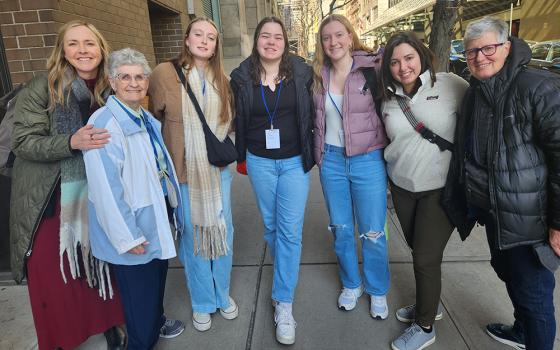
Mission Management
Sick patients want to be treated by the best-trained doctors and nurses available. But is that enough or do patients need pastoral care as an integral part of holistic health care? While most hospitals offer spiritual care to their patients, do patients really need professionally trained and board-certified Catholic chaplains?
One organization thinks so.
“Chaplaincy work is a remarkable ministry, but requires knowledge of the setting,” said David Lichter, executive director of the Milwaukee-based National Association of Catholic Chaplains.
For 45 years the association has been dedicated to improving pastoral care in the health care setting.
“Chaplains are coworkers in the vineyard and need to be able to walk into any room and serve the heart and spirit of the patient and families they encounter,” said Lichter.
Today, the National Association of Catholic Chaplains recommends that hospital chaplains obtain board certification, and it is authorized by the U.S. bishops to certify Catholic chaplains, supervisors and clinical pastoral education supervisors.
“In health care, credentials mean everything,” said Brian Yanofchick, senior director for mission integration and leadership development for the Catholic Health Association. In situations “like intense grief counseling, oncology departments and emergency rooms, for example, training is absolutely critical,” Yanofchick said.
What training does a Catholic chaplain need in order to provide meaningful pastoral care in a hospital setting?
Certification by the National Association of Catholic Chaplains requires, among other things, an undergraduate degree and a graduate-level degree in theology, divinity, religious studies, pastoral ministry, pastoral studies, or spirituality.
In addition, a person must have four units of clinical pastoral education accredited by the Association for Clinical Pastoral Education, the U.S. bishops’ Commission on Certification and Accreditation, or the Canadian Association for Pastoral Practice and Education.
Further, Catholic chaplains must adhere to the Common Code of Ethics for Chaplains, Pastoral Counselors, Pastoral Educators and Students. To maintain certification, chaplains must undertake 50 hours of continuing education each year.
Every five years the board certification needs to be renewed.
“Certification attests to both professional competence and official endorsement by the church,” Lichter said.
“Catholic health care sees spiritual care as an integral and important dimension of our ministry,” said Laura Richter, director of workplace spirituality and director of mission integration at the St. Louis-based Ascension Health System, which has 72 hospitals in 20 states and over 200 full-time chaplains.
“Decades ago, nuns and priests received some training during their years of formation,” she explained. “We have transitioned to more laypeople serving as chaplains.”
Lichter agrees.
Membership in the National Association of Catholic Chaplains has changed to more laypeople than priests and religious. The association has over 2,700 members with 44 percent lay, 34 percent women religious, 17 percent priests and 5 percent deacons and religious brothers. About 75 percent of members are board-certified.
“While we do not mandate certification as a hiring requirement, we consider board certification to be the ‘gold standard’ for Catholic chaplains,” said Richter of Ascension Health System.
Board certification is burdensome and sometimes difficult to access, especially in rural areas. To address the needs of its staff, Ascension Health System has four clinical pastoral education centers.
At the Mayo Clinic in Rochester, Minn., the role of the 25 chaplains is important. There are about 15 Catholic chaplains, including six priests.
“Patient care is consultative and chaplains are accepted as part of the team serving the patient,” said Fr. Dean Marek, a Milwaukee archdiocesan priest who serves as a chaplain at the Mayo Clinic, and previously served as its director of chaplain services.
One of the challenges for holistic health care is that the medical staff at some hospitals is not aware of the contribution of chaplains.
In 1998, Marek and others began to accumulate data on pastoral ministry in order to become accountable to the institution. They developed a “cost per unit of service” metric to begin to demonstrate the value of the chaplaincy program, said Marek.
The hallmark of any profession is that it undertakes research about its effectiveness, said Marek.
The value-added proposition of chaplains required educating the medical staff and administration. “We no longer use the term ‘visiting patients,’ as chaplains simply don’t just ‘visit’ patients,” said Marek.
Another question to be answered is what do patients expect from chaplains?
“One of our goals is to measure outcomes in terms of what we provide patients,” said Marek. For example, how has a patient’s spiritual outlook changed, if at all, during her length of say?
“At a minimum, chaplains remind patients of God’s presence and care,” said Marek.
[Tom Gallagher writes for NCR’s regular Mission Management column. His e-mail address is tom@tomgallagheronline.com.]
Related Web site
National Association of Catholic Chaplains
www.nacc.org



